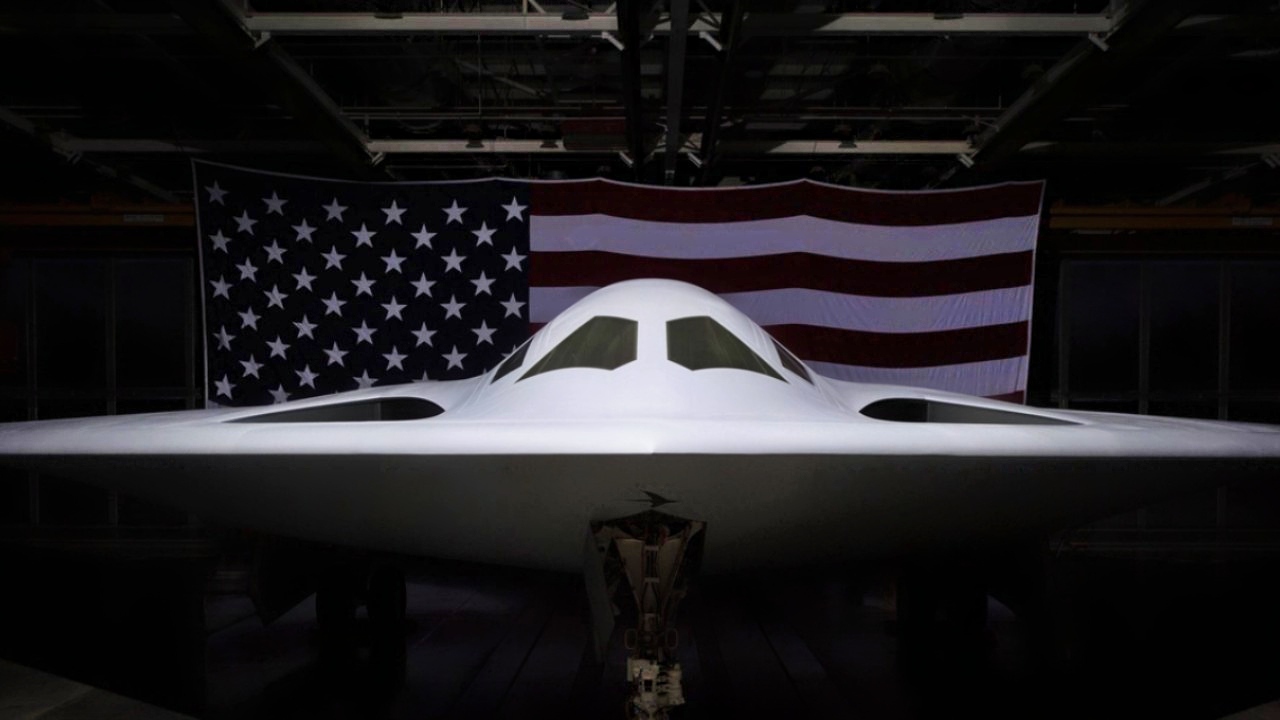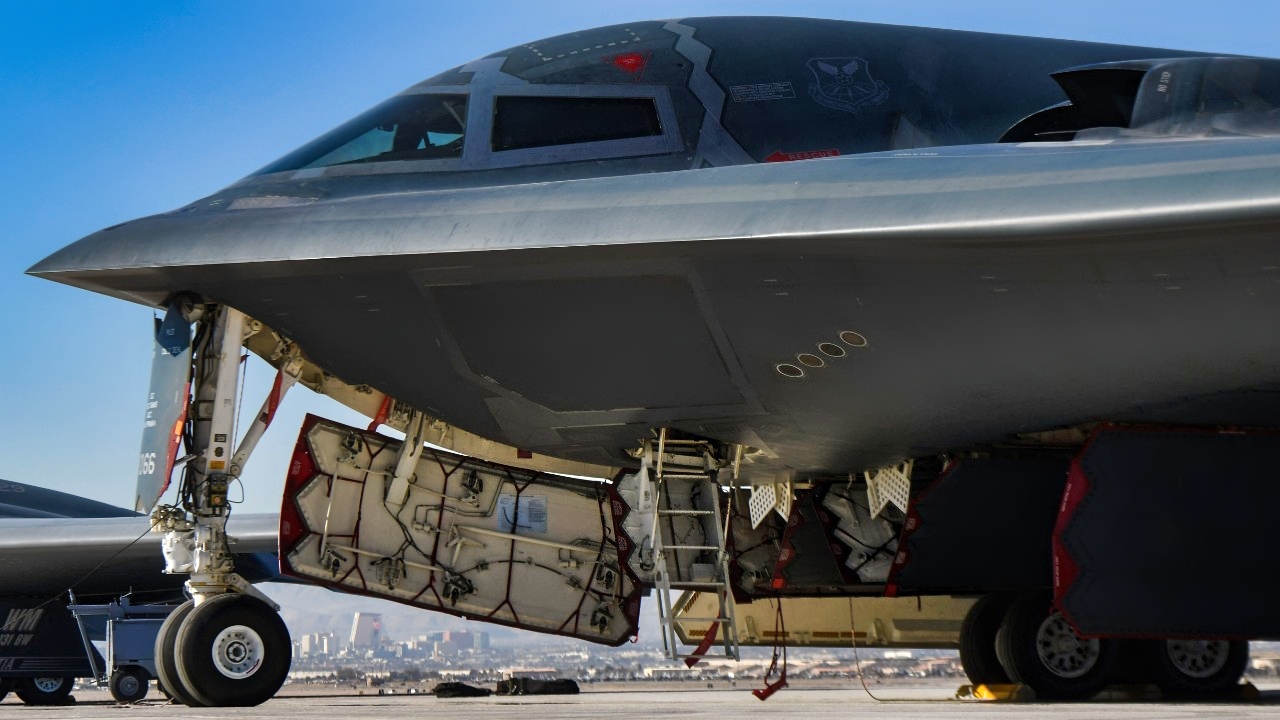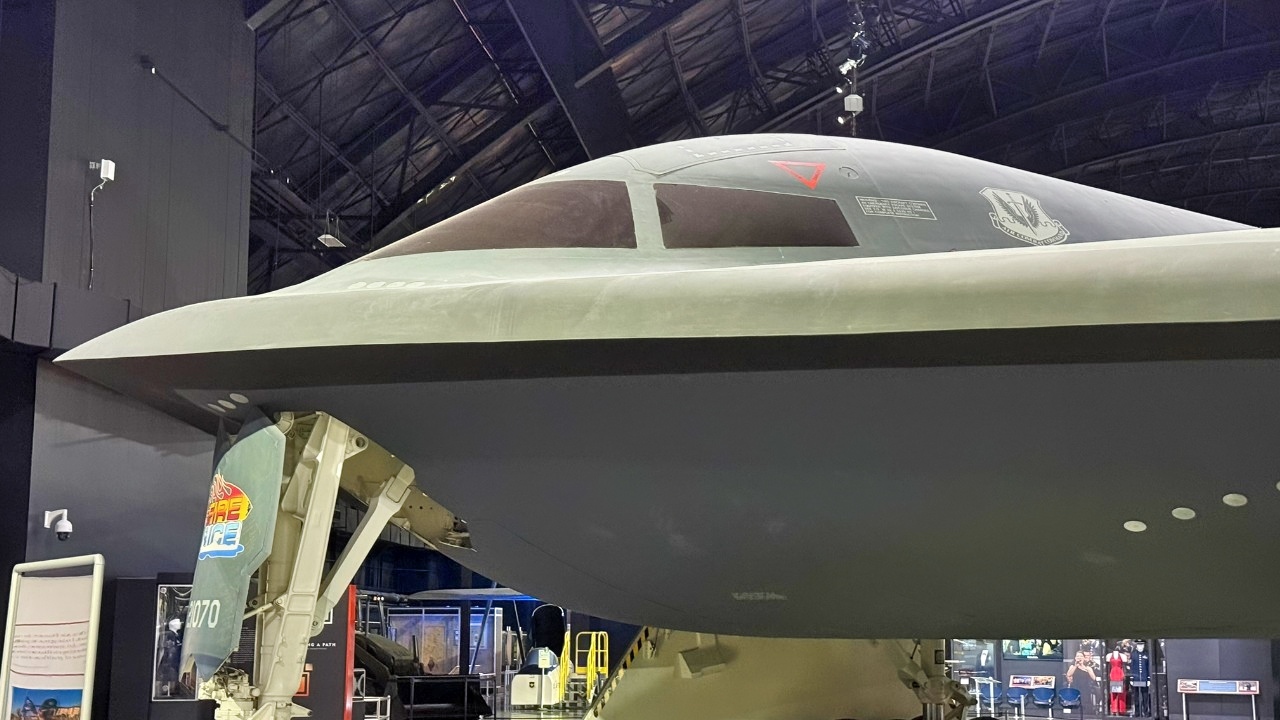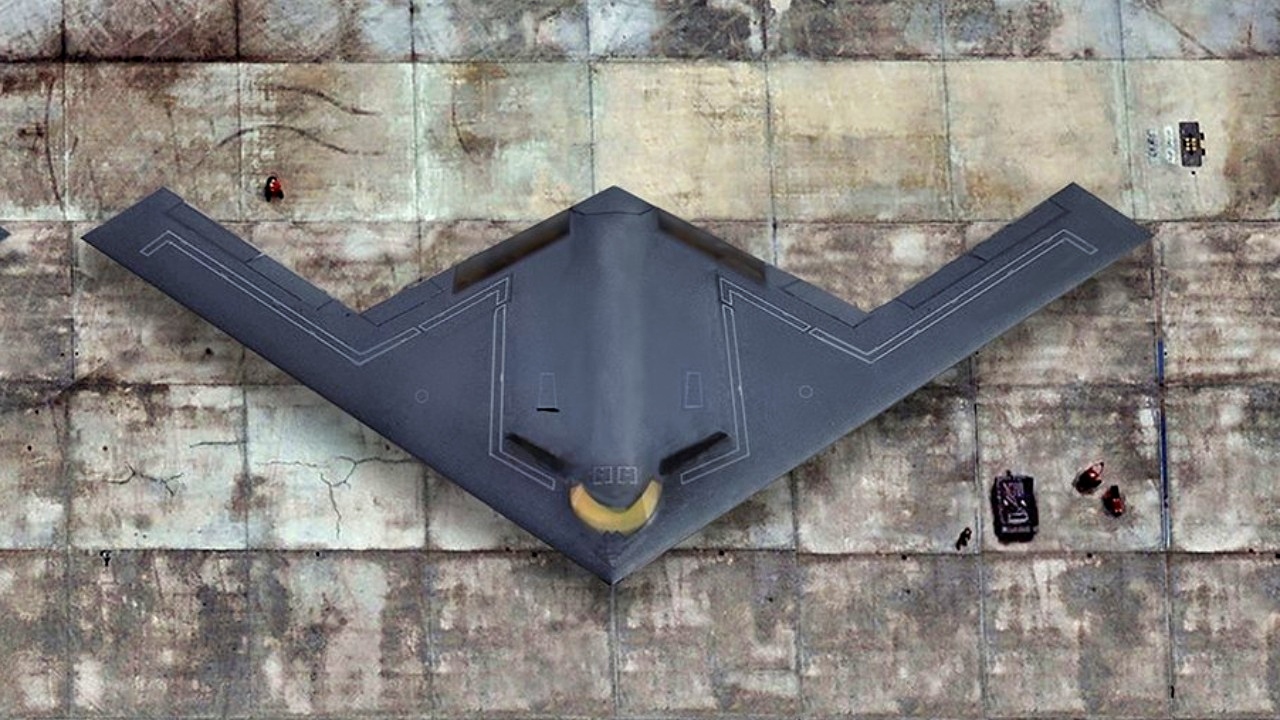Key Points and Summary – China’s H-20 stealth bomber, first announced in 2016, remains elusive, with U.S. intelligence assessing it won’t debut until the 2030s.
-Despite Chinese officials claiming a reveal is “very soon,” there is no verified prototype, and analysts are skeptical. U.S. intelligence officials state China is facing significant “engineering design challenges” and that the H-20 is “probably nowhere near as good” as U.S. platforms.

B-21 Raider Bomber. Image Credit: Creative Commons.

B-21 Raider. Image Credit: Creative Commons.
-Recent satellite imagery of a large “flying-wing” aircraft, intentionally parked in the open, is now believed to be a massive HALE stealth drone, not the H-20, suggesting the bomber program is either delayed or being kept under deep cover.
China’s H-20 Stealth Bomber: Will It Ever Fly?
China has been developing the H-20 stealth bomber for a decade. The Chinese want a modern stealth bomber that can survive in a modern contested environment, with the range to operate in the Second Island Chain and beyond.
However, while claims and grainy images suggest an aircraft with a range of over 10,000 km and a conventional/nuclear payload of more than 10 tons, many US aviation analysts are skeptical of these claims.
And like the American B-2 Spirit bomber, long-range stealth bombers take time to develop and perfect.
China Ensured Photos Were “Leaked” To The Media
Make no mistake, the Chinese aren’t surprised by these supposed “leaked” photos of their aircraft; they were planned for release.
Tyler Rogoway of TWZ wrote that in late May, satellite photos from Planet Labs showed a giant “flying-wing” aircraft parked outside China’s secretive test facility near Malan in Xinjiang province, which is known to be on the leading edge of the country’s unmanned aircraft development efforts.
This aircraft was parked outside a recently built facility to the east of the base, connected to it by a very long taxiway leading to a security gate. He said that he believes this wasn’t an accident or a blunder. He added that it’s far more likely China was ready for this aircraft to be seen by satellites.
Whether these airframes are decoys to throw off Western intelligence or are part of a mockup isn’t known, but the photos that surfaced seem intentional on the Chinese part.
What is Known About China’s H-20 Stealth Bomber
There is no official photograph of the H-20, but a photo posted on Chinese social media showed a new large combat aircraft making a test flight, which was speculated to be China’s new secret H-20 stealth bomber. The location and exact date of the imagery were not disclosed.
The aircraft was a “flying wing” design, followed by a chase plane. The indistinct image, which closely resembles a 2022 photo released by the Chinese of a wind-tunnel test with a bomber that looks similar to the one in Air and Space Forces magazine.
It also looked remarkably close (imagine that) to an American B-2 Spirit stealth bomber.

Three Whiteman Air Force Base 393rd Expeditionary Bomb Squadron B-2 Spirit stealth bombers sit on the runway during Red Flag-Nellis 22-1 on Jan. 26, 2022, at Nellis Air Force Base, Nevada. Red Flag-Nellis 22-1 provides realistic combat training that saves lives by increasing combat effectiveness. (U.S. Air Force photo by Senior Airman Michael A. Richmond)

B-2 Bomber At U.S. Air Force Museum. Image Credit: National Security Journal.
The H-20’s focus is on enhancing China’s power projection capabilities and securing its interests in the Asia-Pacific region. In contrast, the US B-21 is designed for global power projection, ensuring the U.S. can maintain its strategic deterrence and respond to threats anywhere in the world.
We hear about the advanced capabilities of the H-20 and that it will be a power-altering force in the skies over the Indo-Pacific. But where is it? Some analysts believe the pictures we’re seeing aren’t the H-20 but a drone.
American Analysts Skeptical… For Now
The challenges of developing a stealth bomber are vast, as the Chinese know full well. The Chinese have been stating for the past decade that the H-20 will be a significant upgrade to Beijing’s strategic air power.
In July 2022, Chinese state media reported that the bomber was nearing its maiden flight. By March 2024, during the second session of the 14th National People’s Congress, Vice Commander of the PLAAF Wang Wei indicated that the H-20 would be revealed “very soon,” adding that “it is worth the excitement.”
The U.S. military states that it still does not expect China’s long-awaited H-20 bomber to make its “debut” – unclear whether this refers to its entrance into operational service or its public emergence – until sometime in the next decade.
Building a stealth bomber takes time and lots and lots of testing. The Pentagon publishes an unclassified report on China’s military every year. And the H-20 was mentioned.
“The PRC is developing a new generation of long-range bombers, likely named the H-20. The H-20, which may debut sometime in the next decade, will have a range of more than 10,000 km [nearly 6,214 miles], enabling the PLAAF to cover the Second Island Chain and into the western region of the Pacific,” the report added.

A B-2 Spirit bomber deployed from Whiteman Air Force Base, Missouri, is parked on the flightline at Joint Base Pearl Harbor-Hickam, Hawaii, Jan. 10, 2019. Three B-2 bombers and more than 200 Airmen deployed here in support of U.S. Strategic Command’s (USSTRATCOM) bomber task force mission. Bomber aircraft regularly rotate through the Indo-Pacific region to integrate capabilities with key regional partners and maintain a high state of aircrew proficiency. (U.S. Air Force photo by 2nd Lt. Allen Palmer)
“The H-20 bomber’s range could be extended to cover the globe with aerial refueling. It is expected to employ conventional and nuclear weaponry and feature a stealthy design.”
Defense One interviewed an intelligence official, who said the Chinese technology isn’t up to US standards, yet.
“The thing with the H-20 is when you actually look at the system design, it’s probably nowhere near as good as US [low observable] platforms, particularly more advanced ones that we have coming down,” he said.
“They’ve run into a lot of engineering design challenges, in terms of how do you actually make that system capability function in a similar way to a B-2 or B-21.”
“You may choose to unveil it just because they want to show that they’re a great, you know, military power. That doesn’t necessarily mean it actually delivers them the kind of capability that they would need or at the quantity that they would need,” the intelligence official said.
Asked whether the H-20 is a concern, the official replied, “Not really.”
Were Pictures Shown At The Airfield Are A Drone?
The image of the aircraft at the airfield in Xinjiang Province isn’t the H-20 at all, Rogoway said in his article with TWZ.
“The best explanation is that this is a very large, high-altitude, long-endurance (HALE) stealthy drone — similar to the supposed U.S. RQ-180 — but this would be the biggest we have ever seen,” Rogoway wrote.
“China is developing a number of flying-wing type designs of various sizes, including large HALE drones, but nothing at this scale, at least that we know about.”
After ten years, the H-20 remains officially under development with no confirmed prototype flight, no verified production, and scant public evidence of the program’s progress.
Many analysts believe that the silence indicates that the Chinese are having issues developing the bomber.
The appearance last December of a possible medium-range bomber prototype suggested that China is having problems with the H-20 and needs a stopgap solution for a stealthy, penetrating long-range strike platform.
Until we see further proof of the H-20, it is strictly speculation.
About the Author: Steve Balestrieri
Steve Balestrieri is a National Security Columnist. He served as a US Army Special Forces NCO and Warrant Officer. In addition to writing on defense, he covers the NFL for PatsFans.com and is a member of the Pro Football Writers of America (PFWA). His work was regularly featured in many military publications.
More Military
How an F-16 Fighter Barely Dodged 6 Surface-to-Air Missiles
The Mach 2.15 F-111 Aardvark Has a Message for the U.S. Air Force
The U.S. Army’s Bradley Fighting Vehicle Has a Message for Any Military On Earth
The U.S. Navy’s Great Missile Shortage
The F-14 Tomcat U.S. Navy Fighter Has A Message for Any Military On Earth










